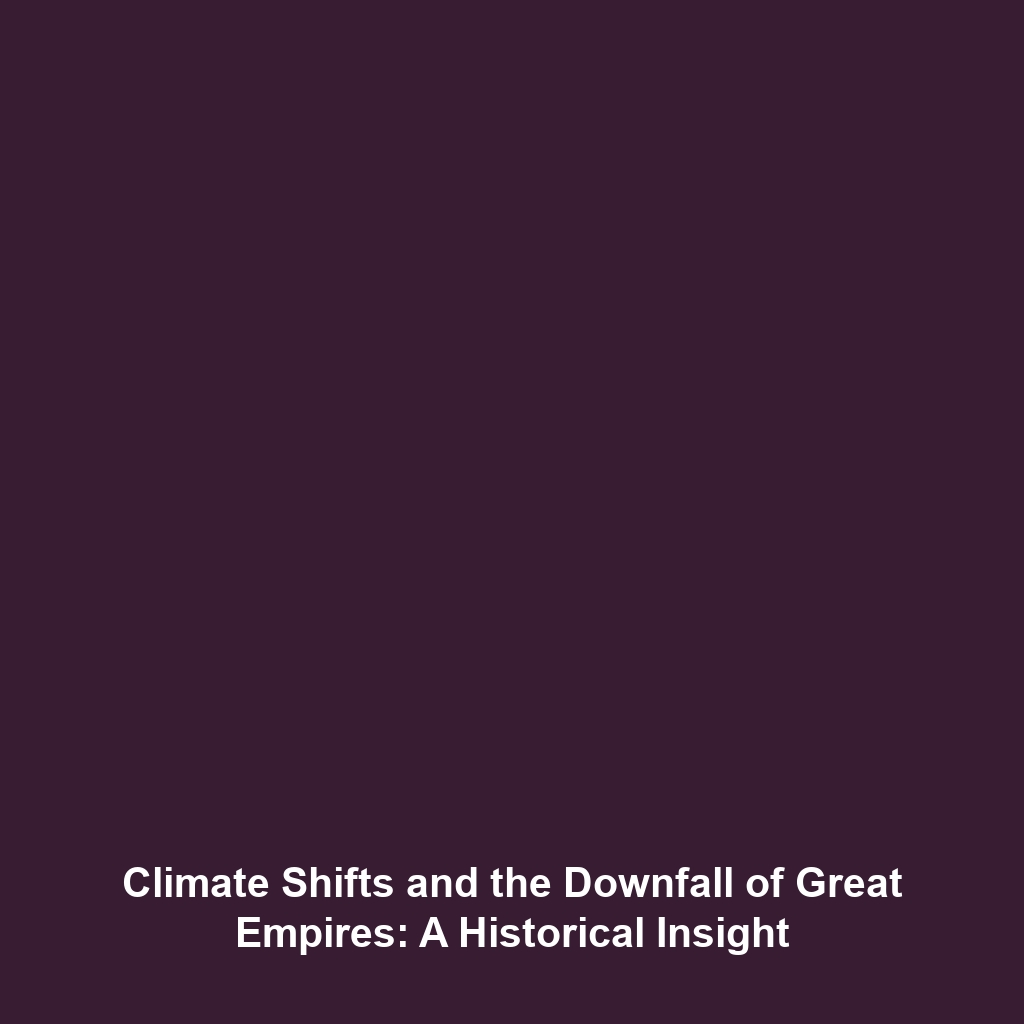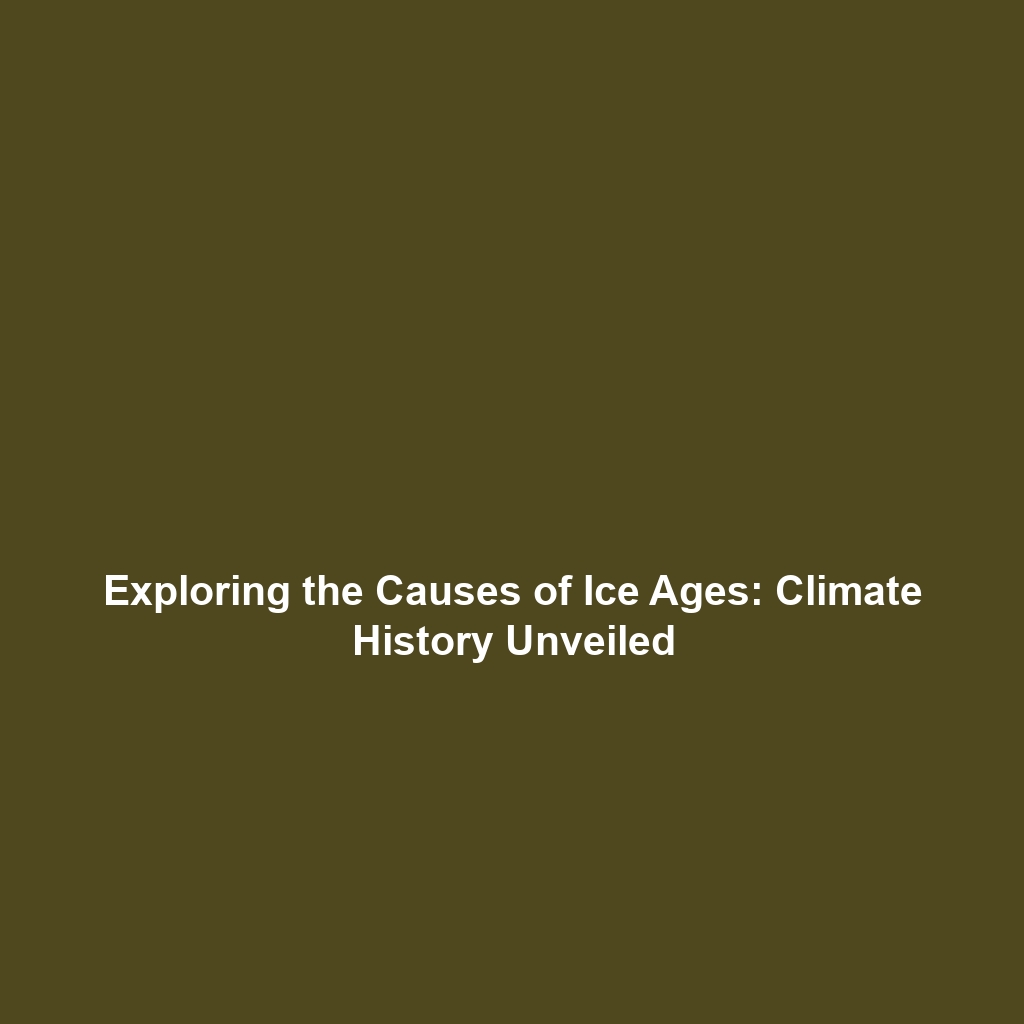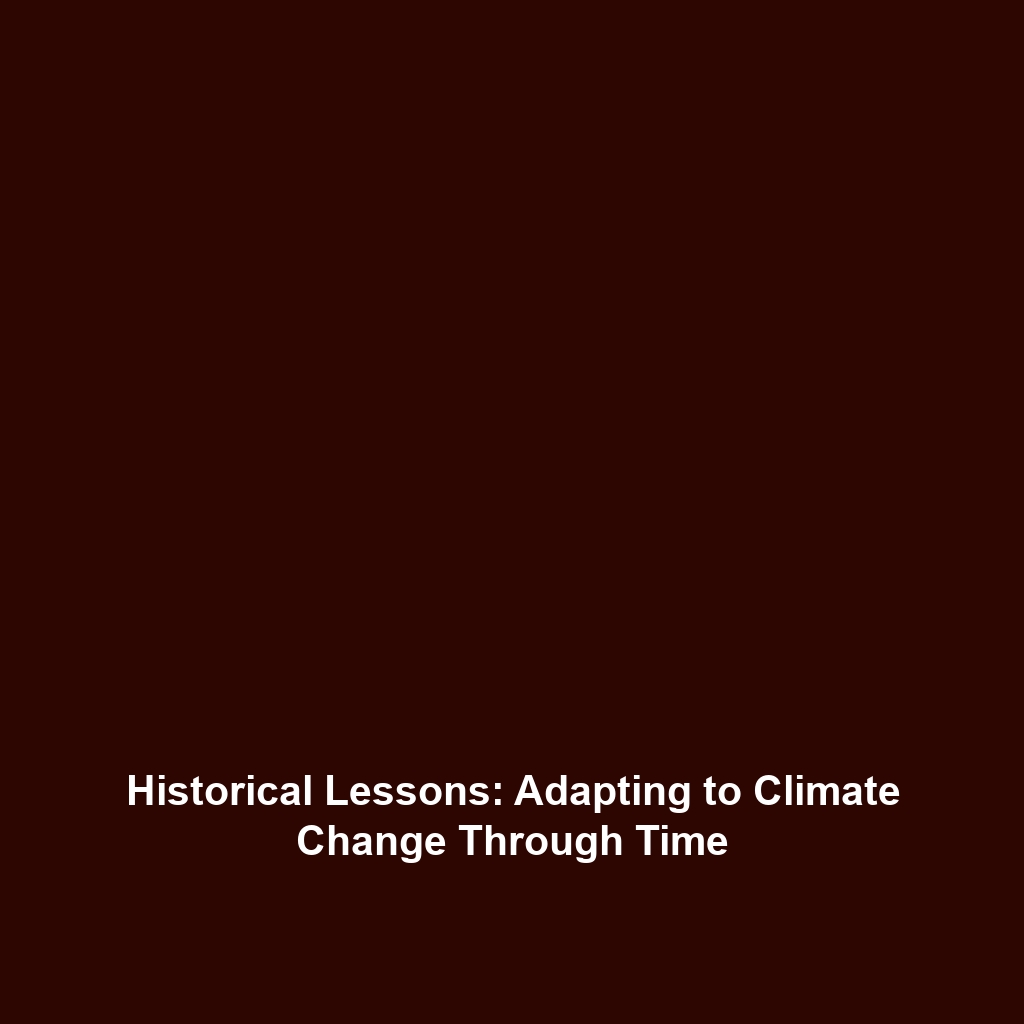Climate and the Fall of Empires
Introduction
Throughout history, climate has played a pivotal role in the rise and fall of empires. Understanding climate and the fall of empires offers critical insight into how environmental changes have influenced political power and societal structures. From droughts leading to famine to extreme weather events causing social upheaval, the connection between climate fluctuations and the collapse of civilizations is a vital area of study within climate history. This article delves into the significant impacts of climate on empires, revealing patterns that still resonate in today’s society.
Key Concepts
Subtopic 1: The Influence of Climate on Societies
The historical relationship between climate and societal development can be summarized through several key concepts:
- Resource Availability: Climate impacts the capacity for agriculture, which directly influences food security and economic stability.
- Migration Patterns: Adverse climate conditions often lead to forced migrations, altering demographic landscapes and challenging existing political structures.
- Conflict and Cooperation: Scarcity can lead to increased conflict, while favorable climate conditions may promote alliances and trade.
Applications and Real-World Uses
The study of climate and the fall of empires holds substantial implications for contemporary issues:
Understanding how climate changes influence the fall of empires can provide insights into modern governance and international relations. For example:
- Policy Development: Governments can use historical data to inform climate policy aimed at building resilience against environmental changes.
- Sustainable Practices: Nations may adopt sustainable agricultural practices inspired by historical examples of resource mishandling.
Current Challenges
Despite the importance of this field, various challenges hinder the comprehensive understanding of climate and the fall of empires:
- Scarcity of Data: Historical weather records are often incomplete or inconsistent, complicating climate reconstructions.
- Generalization Issues: It’s challenging to apply findings from one empire to another due to unique cultural and environmental contexts.
- Interdisciplinary Approaches: The integration of diverse academic fields, such as archaeology and climatology, is often limited.
Future Research and Innovations
Innovations in data collection and analysis promise to enhance understanding of climate and the fall of empires. Key areas of focus include:
- Remote Sensing Technologies: These enhance our ability to monitor historical climate patterns in real-time.
- Climate Modeling: Advanced models are being developed to simulate past climates and predict future scenarios.
- Interdisciplinary Collaboration: Enhanced cooperation between historians, climatologists, and other scientists to share knowledge and methodologies.
Conclusion
In conclusion, the study of climate and the fall of empires is a vital aspect of climate history, providing significant insights into both past and present societal dynamics. Recognizing this relationship can inform modern policies and strategies for resilience in the face of climate change. For further reading, explore our articles on Climate Change Impacts and Historical Empires and Climate.





